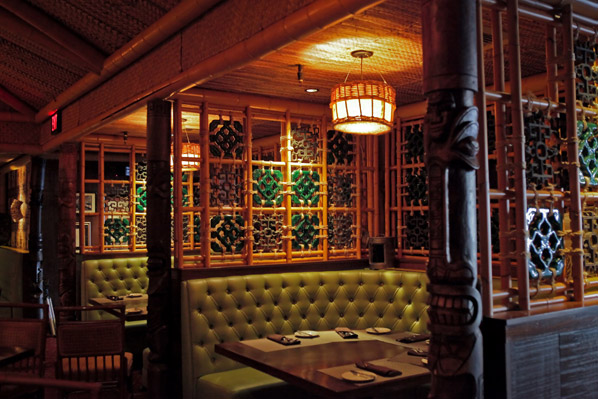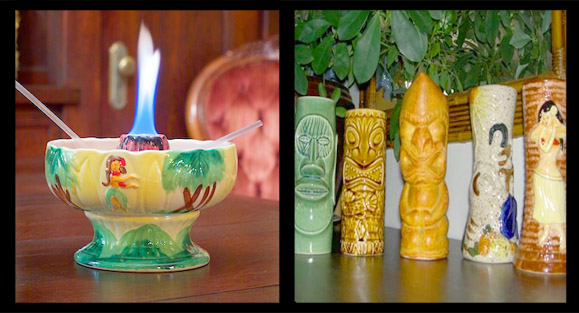Now that my photo shoot is behind me, I can focus on the creation of my dream rehearsal studio. I already have the raw space: 500 square feet behind a friend’s shop that was once used for storage, but is now standing empty.
Of course I could just throw some baffles on the walls to soak up sound, lay down a carpet or two, and get on with things. But why would I do that when I can create a tiki lounge rehearsal studio?
I mean, who doesn’t want to luxuriate in a glorious tiki lounge?
The first tiki bar, “Don the Beachcomber” was opened in 1933 by Ernest Gantt — who went by the dapper alias “Donn Beach” — in L.A. Displayed over the bar were the many trinkets Gantt collected from his travels through the tropics.
These first tiki bars offered guests a delightful selection of exotic rum drinks like the “Sumatra Kula” and the now-infamous “Zombie,” which complemented delicious Cantonese food and Polynesian music, often delivered live via exciting floor shows. When Gantt went off to World War II, the bar thrived under the management of his ex-wife, who turned it into a 16-restaurant franchise.
-
The bar at the original Don The Beachcomber in the 1940s
After the War, Gantt relocated to Hawaii and opened the beachfront “Waikiki Beach,” an homage to the culture of the South Pacific, with tiki torches and masks, palm trees and even a garden hose that showered a gentle rain on the roof. In residence was also Gantt’s pet myna bird, trained to shout, “Give me a beer, stupid!” Swinging Hawaiian music was combined with jazz and the sounds of the Far East and other islands of the South Pacific to create “Exotica,” the soundtrack to the tiki lifestyle that also gave birth to Polynesian pop.
One of the most famous tiki bars is Trader Vic’s, first opened in Oakland, California, by Victor Bergeron in 1936. Bergeron opened branches worldwide and also originated the quintessential “Mai Tai.” I first fell in love with tiki decor when my parents took me to the Trader Vic’s in the basement of the Plaza Hotel in New York City. I was just a wee little lass, and the appearance of an umbrella in my Shirley Temple was enough to send me into a swoon.
Part of the fun of tiki bars is that most have always had their own recipes for house specialty drinks, which are kept secret to prevent other bars from stealing them. Signature drinks usually involve different kinds of rum and blue Curacao, plus tasty tropical fruit juices. And they’re served up in unconventional ceramic vessels like tiki-shaped mugs, coconut shells or in “scorpion bowls” or “volcano bowls” — large punch bowls designed for communal drinking.
The first tiki bars were wildly popular through the ‘60s, then fell largely out of fashion until the ‘90s, when there was a revival that led to new tiki bars popping up all over the world in the grand tradition pioneered by Trader Vic’s and Don the Beachcomber.
The Tonga Room of the Fairmont Hotel in San Francisco is one of the longest-operating tiki bars and has been going strong since 1945.
My concept for my rehearsal studio is to create a tiki bar decor and a real piano bar. As I continue to dream up my own tropical musical paradise, tell me … what’s your favorite part of tiki culture? Is it the mystery, the music, the drinks, the decor … or something else?
xo,
Isabel




